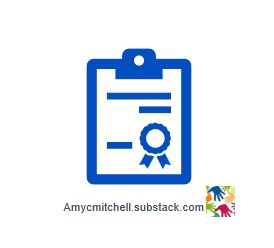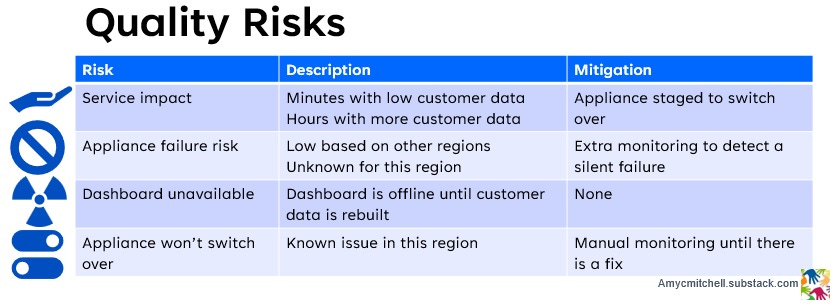Managing Through Quality Constraints
Handling quality tradeoff decisions
You are leading a conference call with your customer. It's not a fun conference call for anyone. Your SaaS product was down for 1 hour last weekend. Your customer needed the dashboard for their failover tests. In the conference call the customer wants to know the root cause of your product being down.
This conference call is especially tricky because your customer has grown rapidly with your service. Recently you discovered that your customer expanded into a new region in which your product has no redundancy.
Quality Tradeoff Considerations
Let's rewind back to what you did when you discovered the risk of failure for your customer. When the customer expanded into the new region, you had these choices:
Ignore the issue
Tell the customer to stop expanding
Prioritize budget and effort to add full redundancy to the region
Work with your product team on a workaround
Deciding among these options puts you in the middle of trading off:
Time to add proper redundancy
Revenue from stopping expansions
Quality of your product
You review the risks to service impact with your product team and determine a workaround that reduces the service risk quickly. The customer's service risk grows as they expand.
You decide to go for limited quality to reduce the risk for the customer's expansion.
Handling Limited Quality in Product Management
What do successful product managers do when forced to limit quality in a product initiative? The steps to take are:
Overcommunicate about the limited quality scope
Follow normal procedures
Plan to minimize the risk interval
Step 1: Overcommunicate about the limited quality approach
Before writing requirements, document the approach and the options that were investigated. Clearly define the quality tradeoffs.
In the example above, the customer has expanded to a region where there is a known issue in handling failures in your SaaS product. Your engineering team recommends manual switchovers until the known issue is fixed.
You prepare the below risk table to summarize the limited quality impacts.
By creating this table, you have two major conclusions:
Risk of service impact goes up as customer data grows
The dashboard is likely to be unavailable for an extended period
Next, determine who needs to approve the approach with the quality tradeoffs. Be sure to get those approvals before spending a lot of time on requirements. The key items for the approval process are:
Current situation in terms of customer impact
Revenue considerations
Options investigated and recommendation
Summary of quality tradeoffs
In the example case, you recommend a workaround of extra monitoring with manual switchovers for the new region. You need approval for the workaround.
Get the internal approvals first then review with sales and your customer.
Step 2: Follow Your Standard Procedures
Even though you are in a risky situation and your stakeholders have agreed to a workaround with limited quality, you continue to follow your standard process for change management. By following your standard change process, you have an additional chance to communicate to the affected teams about the change.
Step 3: Plan to Overcome Quality Tradeoffs
Product teams frequently deliver workarounds to prevent known issues from impacting customers. Before delivering a workaround it is crucial to minimize the time running on a workaround. The simplest temporary fixes can cause unforeseen issues. It is best to decide the plan for the permanent fix before sending a workaround to customers.
Conclusion - Manage through quality constraints
Product managers have many ways to deal with the practical challenges of delivering products that meet customer needs. In some cases, product managers need to make decisions to limit quality in a requirement. Any decision for reduced quality needs to take into account tradeoffs and the impact on customers. Clear communication with the product team, stakeholders, and customers is crucial to managing expectations and alignment with the approach.
Taking the steps to communicate about limited quality, following standard procedures, and mitigating customer risk are the best ways to manage quality constraints in product development.





